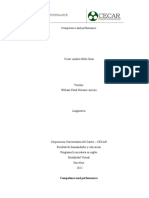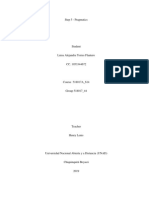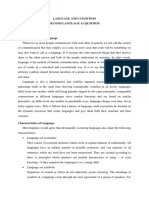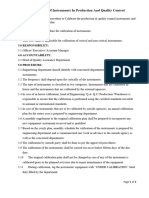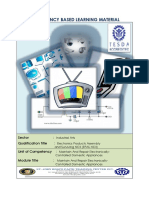U1 - Task: First Task: Author: Martha Lucía Bonilla Revised and Adapted By: Rubén Mauricio Muñoz
U1 - Task: First Task: Author: Martha Lucía Bonilla Revised and Adapted By: Rubén Mauricio Muñoz
Uploaded by
John Alexander GómezCopyright:
Available Formats
U1 - Task: First Task: Author: Martha Lucía Bonilla Revised and Adapted By: Rubén Mauricio Muñoz
U1 - Task: First Task: Author: Martha Lucía Bonilla Revised and Adapted By: Rubén Mauricio Muñoz
Uploaded by
John Alexander GómezOriginal Description:
Original Title
Copyright
Available Formats
Share this document
Did you find this document useful?
Is this content inappropriate?
Copyright:
Available Formats
U1 - Task: First Task: Author: Martha Lucía Bonilla Revised and Adapted By: Rubén Mauricio Muñoz
U1 - Task: First Task: Author: Martha Lucía Bonilla Revised and Adapted By: Rubén Mauricio Muñoz
Uploaded by
John Alexander GómezCopyright:
Available Formats
U1_Task: First Task
Jhon Alexander Gómez Pinzón
Faculty of Human Sciences and Education, Degree in English, University Corporation of the
Caribbean CECAR
Linguistic
Mg. Lady Johana Gómez
October 31st, 2021
Author: Martha Lucía Bonilla
Revised and adapted by: Rubén Mauricio Muñoz
Corporación Universitaria del Caribe “CECAR”
Bachelor in Education in Teaching English as a Foreign
Language Program
English Linguistics
First Assignment
Objective: To have a clear understanding
of the terms Competence & Performance
based on different authors and the relation
to L2
Resource: “Competence and performance
in learning and teaching: theories and
practices” by David Newby
“Competence and performance in learning and teaching: theories and practices”
examines the different ways in which both competence and performance have
been defined by linguists and how these different interpretations have influenced
foreign language learning and teaching. Read the article carefully and develop
the answers in this workshop.
1. Chomsky’s states the “distinction between competence (the speaker-
hearer's knowledge of his language) and performance (the actual use of
language in concrete situations)” He further states that “Observed use of
language cannot constitute the actual subject matter of linguistics. (1Pt.)
a. Based on Chomsky definition about competence and performance,
describe how this competence could be clear evident in an L2
classroom. (You can give examples.)
First of all, is really necessary to clarify that a competence is a
fundamental part to the development knowledge of a language and it's
considered as know how to do in the context, for that reason, students
can demonstrate that they have got a great knowledge when they apply
it in a classroom and in their daily life. When a teacher carries out a
series of activities that seek to strengthen the learning of children and
young people, it is done with that main reason and each student who
responds correctly, can make it known that they have met the
institutional and area objectives, in this case, the area of foreign
languages.
Author: Martha Lucía Bonilla
Revised and adapted by: Rubén Mauricio Muñoz
b. Give reasons why performance cannot constitute matter of linguistics
but competence can? Cite at least an author
The performance of the whole cannot constitute a linguistic question
because the most important thing in the development, are the
competences, what the student manages to learn and develop
throughout a process. As has been well defined, competence is what
the student demonstrates after having gone through a process; it is
know-how in context.
So, supporting Hymes's idea that says: "For Hymes, performance is of
interest since it is the “product of social interaction” (1972:
271)."
We can learn that if a student loses interest, then performance ceases
to be a main agent because the end of the process is worth more, that
is, the product or, more clearly, the competence.
1. “We have to account for the fact that a normal child acquires knowledge
of sentences, not only as grammatical, but also as appropriate. He or
she acquires competence as to when to speak, when not, and as to what
to talk about with whom, when, where, in what manner (Hymes).” What
does this sentence mean? And how the idea does not necessarily show
Chomsky’s idea about competence and performance? (1Pt.)
A normal child acquires and develops the use of language in a way that
he can use it in different contexts in which he finds himself. Simply put,
the phrase relates to differentiating when, where and how, we can give
an opinion on some point of view, description, explain events and
express feelings towards something. A communicative competence
requires the correct use of the language in the necessary context. That
is why it is clarified that a child manages to use the language knowing
its structure.
Chomsky dismissed performance as an imperfect manifestation of
competence and not worthy of being incorporated into a “serious
discipline”. The idea does not necessarily show as Chomsky says.
Author: Martha Lucía Bonilla
Revised and adapted by: Rubén Mauricio Muñoz
2. Halliday states “Can mean is a ‘realization of can do” this corresponds
to the second criticism of Chomsky’s view of competence and
performance and also concern the functional dimension of a language.
Describe the second criticism and the functional dimension. (1Pt)
For linguists and philosophers such as Halliday (passim), Austin (1962)
and Searle (1969), the very basis of language is of a functional nature.
This is reflected in the title of Austin’s famous book How to do things with
words.
The term speech functions, indicates the individual's ability to do things
related to the use of the language, however, it can mean an act that
would have a greater influence on the way of communicating knowledge
of the foreign language. It would be proposed to make definitions of the
term and then establish the objectives that these definitions achieve.
Indeed, in the early days of communicative teaching it was not
uncommon to hear the term ‘notional-functional approach’ being used
synonymously for communicative language teaching.
3. Is language a unit of linguistic analysis? Explain and cite author(s). (1Pt)
Absolutely true. It's an important part of the linguistic because is the
center of all the communicative competence.
A discourse perspective of competence focuses on the ongoing choices
that speakers make while speaking or writing transmit, adapt and clarify
a message, to make language use more efficient, to show the relevance
of one information chunk to another etc.
Halliday put forward the counterclaim that “Language does not consist
of sentences; it consists of text or discourse– the exchange of meanings
in interpersonal contexts of one kind or another” (1978: 2).
4. What does Chomsky say opposite to the affirmations on the left? (1Pt)
Langacker, Heine , Tomasello and Chomsky
Jackendoff
language is not an autonomous If language is not separate
cognitive faculty from, but embedded within,
grammar is conceptualization general aspects of human
cognition, then linguists must
knowledge of language
go beyond linguistic reality in
emerges from language use order to explain how language
is stored in the brain and used
in actual contexts.
Author: Martha Lucía Bonilla
Revised and adapted by: Rubén Mauricio Muñoz
Theories of language
acquisition since linguists will
seek to explain not only how
language input is processed
and categorized but how
infants process and categorize
their experience and
perceptions of the world in
general.
It’s innate in a child at birth is
not only what Chomsky termed
a “language acquisition device”
but an experience acquisition
device.
5. What are the schematic constructs? (1Pt)
These constructs, or mental representation of knowledge, interact with
systemic knowledge of a language to facilitate the processing,
interpretation and comprehension of language. Schematic constructs
have, on the one hand, a personal element to them: human beings
interpret one and the same event or one and the same utterance in
differing ways. However, schematic knowledge is also to a considerable
extent conventional in that speakers of a speech community will share a
common mode of perceiving an event or utterance.
Schemata: a set of ideas, associations, expectations which an individual
speaker or listener may have in connection with a concept, an object,
person, place, action, event etc.
• Scenario: a speaker’s internal mental representation of a state of
affairs, event etc. in the external
world.
• Frame: a commonly occurring, generalizable scenario with which a
speaker and a hearer are familiar; a ‘remembered framework’ (see
Minsky 1975, cited in Brown and Yule 1983: 238); lexical, grammatical
and pragmatic meaning are to a certain extent predictable in a specific
scenario.
• Script: a frame that extends beyond single utterances; a ‘remembered
framework of coherent chains of
utterance forms, speech functions, topics etc., in which specific
discourse patterns tend to occur and
are generalizable (see Schank and Abelson 1977 cited in Brown and
Yule 1983: 241; Hoey 1991).
Adjacency pairs (for example, ‘thank you’ – ‘you’re welcome’) can be
defined as highly predictable, prototypical scripts.
Author: Martha Lucía Bonilla
Revised and adapted by: Rubén Mauricio Muñoz
6. In 1980 Canale and Swain provided a description of competence based
on four categories. What are those categories? Explain. (1Pt)
1. Grammatical competence: knowledge of lexical items and of rules
of morphology, syntax, sentence grammar semantics and
phonology.
2. Sociolinguistic competence: the ability to communicate
appropriately in a variety of contexts; this includes both verbal and
non-verbal communication.
3. Discourse competence: the ability to use language which goes
beyond the level of the sentence; this includes aspects such as
cohesion and coherence.
4. Strategic competence: appropriate use of communication
strategies to overcome or repair breakdowns in communication, due
perhaps to lack of linguistic competence.
7. After reading all the competences described in the CEFR what do you
think CEFR perception about competence and performance? Is it more
related to social or individual? Is it more linguistic? Or not? (1Pt)
One of the objectives of the Common European Framework of
Reference for Languages is to help users describe the levels of
language proficiency required by existing exams and assessment
programs, in order to facilitate comparisons between different certificate
systems.
Each of the levels shows what each individual student can do and is
capable of doing. It is important that we can verify at what level we are
in order to improve the different shortcomings we have in foreign
language skills.
We can also say that skills and performances are more associated with
the individual but are manifested in a social way so that each person
reinforces their weaknesses.
Author: Martha Lucía Bonilla
Revised and adapted by: Rubén Mauricio Muñoz
8. Write your own conclusions about competence and performance and
how these two terms affect the SLA? (2Pts.)
A competence is a performance. A performance involves integrating
knowledge, skills (abilities) and attitudes and applying this integration in
a practical and creative way in the execution of a task that must have a
clear relationship with life (what we call the performance of the
competence). Competence involves doing and being that deals
effectively with problem solving. It is not just knowledge. It is an applied
knowledge (to do - I do things competently -) and a knowledge integrated
into my person (a being - I am a competent person in ...) that allows me
to solve problems effectively.
They affect the SLA in the way. Competence is not a ‘being able to do’
(capabilities), it is not even exclusively a ‘know-how’ (knowledge
exclusively), although being competent implies both… But it is ‘doing it’.
It is therefore the resolution of a task effectively.
Author: Martha Lucía Bonilla
Revised and adapted by: Rubén Mauricio Muñoz
You might also like
- Test Bank For Intimate Relationships 3rd by BradburyDocument18 pagesTest Bank For Intimate Relationships 3rd by BradburyLisaTurnerMDkfym100% (36)
- Plano Electrico PC130-8Document9 pagesPlano Electrico PC130-8jon fredyNoch keine Bewertungen
- Unit 1 LinguisticDocument6 pagesUnit 1 LinguisticMelissa Monsalve PabónNoch keine Bewertungen
- Competence and Performance in Learning and TeachingDocument7 pagesCompetence and Performance in Learning and TeachingGerman SierraNoch keine Bewertungen
- First Assignment (Linguistics) - Jorge Isaac Paba RuenesDocument6 pagesFirst Assignment (Linguistics) - Jorge Isaac Paba RuenesIsaac Paba Ruenes EPD CO129Noch keine Bewertungen
- Primer Trabajo UNIDAD 1Document8 pagesPrimer Trabajo UNIDAD 1liliana yepezNoch keine Bewertungen
- English Linguistics - First AssignmentDocument8 pagesEnglish Linguistics - First AssignmentCamila AlarconNoch keine Bewertungen
- Competence and PerformanceDocument6 pagesCompetence and Performancemarlyn silvaNoch keine Bewertungen
- Primer Trabajo LilianaDocument11 pagesPrimer Trabajo Lilianaliliana yepezNoch keine Bewertungen
- Actividad Linguística 1Document7 pagesActividad Linguística 1Ingrid Suarez PerezNoch keine Bewertungen
- Actividad Linguística 1Document11 pagesActividad Linguística 1Ingrid Suarez PerezNoch keine Bewertungen
- Principles of Language Learning and Teaching-Notas ResumidasDocument24 pagesPrinciples of Language Learning and Teaching-Notas ResumidasAnairamNoch keine Bewertungen
- Second AssignmentDocument9 pagesSecond AssignmentWaly's English Course - Curso de InglésNoch keine Bewertungen
- Primer TrabajoDocument3 pagesPrimer TrabajoArmando Barahona TorresNoch keine Bewertungen
- Competence and Performance: Norman Advíncula RamosDocument4 pagesCompetence and Performance: Norman Advíncula RamosNEYLA MELIZA CAICEDO CAICEDONoch keine Bewertungen
- Applied Linguis AssigDocument9 pagesApplied Linguis Assigahmedfathyfoydah555Noch keine Bewertungen
- Chapter 6 Kuma: Learner-Center MethodDocument3 pagesChapter 6 Kuma: Learner-Center MethodbelenNoch keine Bewertungen
- Edu 360 EncodeDocument28 pagesEdu 360 EncodeRoseyy MorsNoch keine Bewertungen
- Svetlana Kurteš, Cambridgekurtes - Key - Competences - in - Foreign - Lanuage - Learning - 13Document7 pagesSvetlana Kurteš, Cambridgekurtes - Key - Competences - in - Foreign - Lanuage - Learning - 13Carlos Fernando Suarez PatiñoNoch keine Bewertungen
- Primer TrabajoDocument2 pagesPrimer TrabajojohnferneyNoch keine Bewertungen
- 10imam SantosoDocument11 pages10imam SantosoMonalisha MandalNoch keine Bewertungen
- Discourse Theory/Communicative CompetenceDocument43 pagesDiscourse Theory/Communicative CompetenceMargie O'BrienNoch keine Bewertungen
- Summary of Kumara (2006)Document84 pagesSummary of Kumara (2006)elihesari690Noch keine Bewertungen
- Communicative Language Teaching An OvervDocument8 pagesCommunicative Language Teaching An OvervNgân VũNoch keine Bewertungen
- Resumen IN Tema 01Document7 pagesResumen IN Tema 01Daniel AranaNoch keine Bewertungen
- Assignment7 Sla Sila CelebiDocument4 pagesAssignment7 Sla Sila Celebiasliduru1802Noch keine Bewertungen
- Tema 1 Ingles MaestrosDocument20 pagesTema 1 Ingles Maestrospbistue100% (2)
- Today's Topic:: Language As Mental PhenomenonDocument48 pagesToday's Topic:: Language As Mental PhenomenonAika Kristine L. ValenciaNoch keine Bewertungen
- Group 4: Social Contexts of Second Language Acquisition (Sla)Document30 pagesGroup 4: Social Contexts of Second Language Acquisition (Sla)Gale Monique ValeNoch keine Bewertungen
- Language As A DiscourseDocument3 pagesLanguage As A DiscoursetrandinhgiabaoNoch keine Bewertungen
- Competence and PerformanceDocument7 pagesCompetence and PerformanceVICTOR ANDRES BELLO DIAZNoch keine Bewertungen
- El Resumen Unit 4Document12 pagesEl Resumen Unit 4Laura EducaNoch keine Bewertungen
- Final Exam SociolinguisticsDocument14 pagesFinal Exam SociolinguisticsKANISKA A/P MAYALAGAN STUDENTNoch keine Bewertungen
- First Assignment DevelopedDocument3 pagesFirst Assignment DevelopedjohnferneyNoch keine Bewertungen
- CC د. شيماءDocument15 pagesCC د. شيماءMackBrideNoch keine Bewertungen
- Chapter IDocument8 pagesChapter IAsshiyyatul Fitryy AwaqNoch keine Bewertungen
- Lecture 2 Theories and Principles of MTB-MLEDocument3 pagesLecture 2 Theories and Principles of MTB-MLEAnne BautistaNoch keine Bewertungen
- Linguistic CompetenceDocument4 pagesLinguistic CompetenceSadiqueAliPeerzadaNoch keine Bewertungen
- 1 Opening Commentary: Language in Cognition and Culture: N. J. EnfieldDocument6 pages1 Opening Commentary: Language in Cognition and Culture: N. J. Enfieldhoggestars72Noch keine Bewertungen
- Written Report in FoundationDocument11 pagesWritten Report in FoundationAika Kristine L. ValenciaNoch keine Bewertungen
- Written Report in FoundationDocument11 pagesWritten Report in FoundationAika Kristine L. ValenciaNoch keine Bewertungen
- Topic 2-2023Document9 pagesTopic 2-2023Carolina Cortondo MondragónNoch keine Bewertungen
- Didactic Questions CorrectedDocument10 pagesDidactic Questions CorrectedLuciaNoch keine Bewertungen
- ACFrOgBSaAdJ6Arc90mIpXQqBQTg2-QfEmWVK38 Vvt9eDxeHeXP463VA Civg827DPVhjuyBb2zRdEO9zDl md5P68lu-ozAOzzQhdr3dyPpdmecYZLBXbqluP8sZbGNGkfrEu6E1HyZ0UzTgQNDocument6 pagesACFrOgBSaAdJ6Arc90mIpXQqBQTg2-QfEmWVK38 Vvt9eDxeHeXP463VA Civg827DPVhjuyBb2zRdEO9zDl md5P68lu-ozAOzzQhdr3dyPpdmecYZLBXbqluP8sZbGNGkfrEu6E1HyZ0UzTgQNCarolina Cortondo MondragónNoch keine Bewertungen
- Communicative CompetenceDocument40 pagesCommunicative CompetenceiamyarminatatianaNoch keine Bewertungen
- S4 Task 1Document4 pagesS4 Task 1ISRAELNoch keine Bewertungen
- S4 Task 1Document4 pagesS4 Task 1ISRAELNoch keine Bewertungen
- Introduction To LinguisticsDocument9 pagesIntroduction To LinguisticsAlejandra TorresNoch keine Bewertungen
- Unit 4 Communicative Competence. Analysis of Its Components.Document7 pagesUnit 4 Communicative Competence. Analysis of Its Components.Miriam Reinoso SánchezNoch keine Bewertungen
- Communicative Competence in English Language TeachingDocument17 pagesCommunicative Competence in English Language TeachingPaulo Antonio JoaquimNoch keine Bewertungen
- Introduction To Linguistics Lesson One HandoutsDocument5 pagesIntroduction To Linguistics Lesson One HandoutsZulueta ZafeNoch keine Bewertungen
- EL103 Module 2Document12 pagesEL103 Module 2Zandra Loreine AmoNoch keine Bewertungen
- An Analisys Pragmatics Meaning in Twilight Movie Based On GenderDocument12 pagesAn Analisys Pragmatics Meaning in Twilight Movie Based On GenderYudhi NugrahaNoch keine Bewertungen
- EL103 Module 1Document13 pagesEL103 Module 1Zandra Loreine Amo100% (1)
- 4th Stream PDFDocument5 pages4th Stream PDFDaniela Jane Echipare TalanganNoch keine Bewertungen
- Language and CognitionDocument14 pagesLanguage and Cognitionnurul intanNoch keine Bewertungen
- Language Learning G6Document10 pagesLanguage Learning G6dewakgmnNoch keine Bewertungen
- Unit 2 Language Processing (Comprehension and Language Expression)Document15 pagesUnit 2 Language Processing (Comprehension and Language Expression)abcdNoch keine Bewertungen
- Topic 2Document6 pagesTopic 2Teresa Pajarón LacaveNoch keine Bewertungen
- Children talking about talking: The reflexive emergence of languageFrom EverandChildren talking about talking: The reflexive emergence of languageNoch keine Bewertungen
- U2 - Link To Upload Third Assignment - Stress and IntonationDocument2 pagesU2 - Link To Upload Third Assignment - Stress and IntonationJohn Alexander Gómez100% (1)
- Workshop On Previewing - CECAR - Jhon GómezDocument10 pagesWorkshop On Previewing - CECAR - Jhon GómezJohn Alexander GómezNoch keine Bewertungen
- U2 - Link To Upload Third Assignment - Stress and IntonationDocument2 pagesU2 - Link To Upload Third Assignment - Stress and IntonationJohn Alexander Gómez100% (1)
- U2 - Writing Assigment - The Snows of KilimanjaroDocument2 pagesU2 - Writing Assigment - The Snows of KilimanjaroJohn Alexander GómezNoch keine Bewertungen
- PatanjaliYogaSutra SADHANA PADADocument63 pagesPatanjaliYogaSutra SADHANA PADAksrinivas9999100% (2)
- Hades User ManualDocument35 pagesHades User ManualMohammed ElsayedNoch keine Bewertungen
- Winmpx Controller Upgrade Dos To Windows Ait SpecificDocument2 pagesWinmpx Controller Upgrade Dos To Windows Ait SpecificPERCY OlivNoch keine Bewertungen
- Calibration of Instruments in Production and Quality Control.Document2 pagesCalibration of Instruments in Production and Quality Control.Kike KikinNoch keine Bewertungen
- The Politics of The Polyphony of Perfor PDFDocument13 pagesThe Politics of The Polyphony of Perfor PDFLjubisa MaticNoch keine Bewertungen
- Report On Native Konbac Bamboo Product Private LimitedDocument3 pagesReport On Native Konbac Bamboo Product Private LimitedSuprio SahaNoch keine Bewertungen
- Writing A Topic OutlineDocument23 pagesWriting A Topic OutlineMa. Rhona Faye Medes100% (1)
- Summative in Physical Science 4th QDocument4 pagesSummative in Physical Science 4th QJoelynBitosNoch keine Bewertungen
- HP Designjet T930 Printer Series: Boost Team Productivity and Enhance SecurityDocument2 pagesHP Designjet T930 Printer Series: Boost Team Productivity and Enhance SecurityjosedgmNoch keine Bewertungen
- Electronics CBLM PDFDocument85 pagesElectronics CBLM PDFNenelyn FloresNoch keine Bewertungen
- How Long Will Francis and His Friends Have Been Doing The Following Things by The End of Their School HolidaysDocument3 pagesHow Long Will Francis and His Friends Have Been Doing The Following Things by The End of Their School HolidaysAndreea MihalacheNoch keine Bewertungen
- Ask Questions About C.P.RDocument5 pagesAsk Questions About C.P.RAnonymous FCOOcnNoch keine Bewertungen
- 2013 Opel Meriva 101433Document231 pages2013 Opel Meriva 101433dimodimoNoch keine Bewertungen
- Re-01 Answer SheetDocument13 pagesRe-01 Answer SheetF.A. D.G.E.Noch keine Bewertungen
- Module 5 American Colonial PeriodDocument8 pagesModule 5 American Colonial PeriodShane SaynoNoch keine Bewertungen
- Halo-Beyonce Ingles 4Document1 pageHalo-Beyonce Ingles 4Edwin RamirezNoch keine Bewertungen
- Resume of Yelly2danniDocument1 pageResume of Yelly2danniapi-31704300Noch keine Bewertungen
- Sop LeedsDocument2 pagesSop Leedssinto johnsonNoch keine Bewertungen
- Mediating Effect of Employee Positive Mood in The Relationship Between Employee Job Satisfaction and Employee Performance in Nepal Electricity AuthorityDocument23 pagesMediating Effect of Employee Positive Mood in The Relationship Between Employee Job Satisfaction and Employee Performance in Nepal Electricity Authoritybharat kcNoch keine Bewertungen
- Educational Wave Pakistan: Name Class 10 Marks 40 Roll# SUBJECT Mathematics Time 60 MinDocument2 pagesEducational Wave Pakistan: Name Class 10 Marks 40 Roll# SUBJECT Mathematics Time 60 MinMuhammadQasimNoch keine Bewertungen
- Bill Martin Into The Wild KasamaDocument60 pagesBill Martin Into The Wild KasamaEnzo RhynerNoch keine Bewertungen
- Telemedicine: International Group Institute For Information Industry Jan 2008Document30 pagesTelemedicine: International Group Institute For Information Industry Jan 2008Ted Chao100% (7)
- Vector Analysis 5Document13 pagesVector Analysis 5opulitheNoch keine Bewertungen
- Psych 101 Lesson 5.1 The Physical and Sexual Self Part 1Document9 pagesPsych 101 Lesson 5.1 The Physical and Sexual Self Part 1Rigel LimaNoch keine Bewertungen
- Nama Asset Bean SpotDocument3 pagesNama Asset Bean SpotSafrizal AshariNoch keine Bewertungen
- Lesson Plan in Physical ScienceDocument2 pagesLesson Plan in Physical ScienceLevigilda CarbosNoch keine Bewertungen
- Allama Iqbal Open University Islamabad: Book Name (8612) Level: B.EdDocument9 pagesAllama Iqbal Open University Islamabad: Book Name (8612) Level: B.EdArshad SanwalNoch keine Bewertungen






























